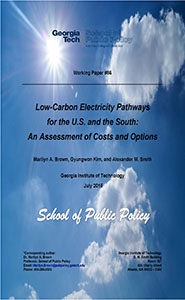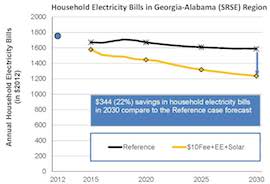 On June 2, 2014, the U.S. Environmental Protection Agency proposed first-ever federal limits on carbon pollution from existing power plants (known as the Clean Power Plan). The Plan establishes carbon pollution goals for each state, and is projected to achieve a 30 percent cut in carbon pollution from 2005 levels by 2030 nationwide. It gives states considerable flexibility to design their own pathway to clean power, taking into consideration each state’s unique circumstances and priorities. Georgia Tech initiated a dialog and research program examining regional and state compliance options. This process was facilitated by fact-based and collaborative discussions with utilities, policymakers, business, and others. It was enriched by substantial data analysis and modeling.
On June 2, 2014, the U.S. Environmental Protection Agency proposed first-ever federal limits on carbon pollution from existing power plants (known as the Clean Power Plan). The Plan establishes carbon pollution goals for each state, and is projected to achieve a 30 percent cut in carbon pollution from 2005 levels by 2030 nationwide. It gives states considerable flexibility to design their own pathway to clean power, taking into consideration each state’s unique circumstances and priorities. Georgia Tech initiated a dialog and research program examining regional and state compliance options. This process was facilitated by fact-based and collaborative discussions with utilities, policymakers, business, and others. It was enriched by substantial data analysis and modeling.
In July, 2015, Georgia Tech published a report emerging from this process. It addresses an array of complex questions surrounding the Clean Power Plan. Of particular interest to many advocates of consumer interests and economic development, are questions about impacts on electricity rates, bills, and economic growth. The results are described in the following documents.
Documentation
- Report: Low-Carbon Electricity Pathways for the U.S. and the South
- Low Carbon Fig 17 - State Bills [JPEG Chart]
- Georgia Institute of Technology press release
- Fact Sheets for States
- Dynamic Presentation #1
- Dynamic Presentation #2
